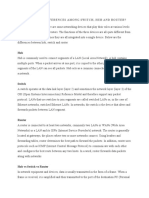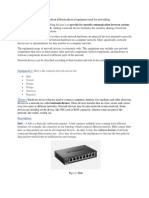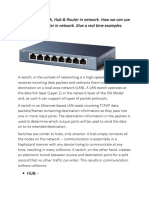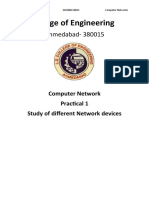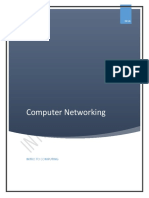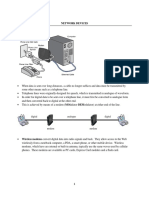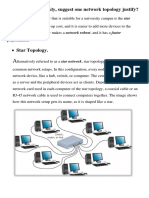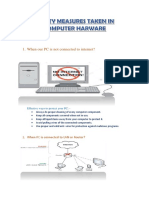0% found this document useful (0 votes)
74 views2 pagesUniversity Network Devices Guide
A switch is best for connecting devices within a university network as it sends data only to the specific addressed device, unlike a hub which broadcasts to all devices. A router can connect multiple networks and is programmed to direct traffic, so a combination of switch and router allows devices to connect within the university and to other networks externally.
Uploaded by
Khushal GoyalCopyright
© © All Rights Reserved
We take content rights seriously. If you suspect this is your content, claim it here.
Available Formats
Download as DOCX, PDF, TXT or read online on Scribd
0% found this document useful (0 votes)
74 views2 pagesUniversity Network Devices Guide
A switch is best for connecting devices within a university network as it sends data only to the specific addressed device, unlike a hub which broadcasts to all devices. A router can connect multiple networks and is programmed to direct traffic, so a combination of switch and router allows devices to connect within the university and to other networks externally.
Uploaded by
Khushal GoyalCopyright
© © All Rights Reserved
We take content rights seriously. If you suspect this is your content, claim it here.
Available Formats
Download as DOCX, PDF, TXT or read online on Scribd
/ 2















